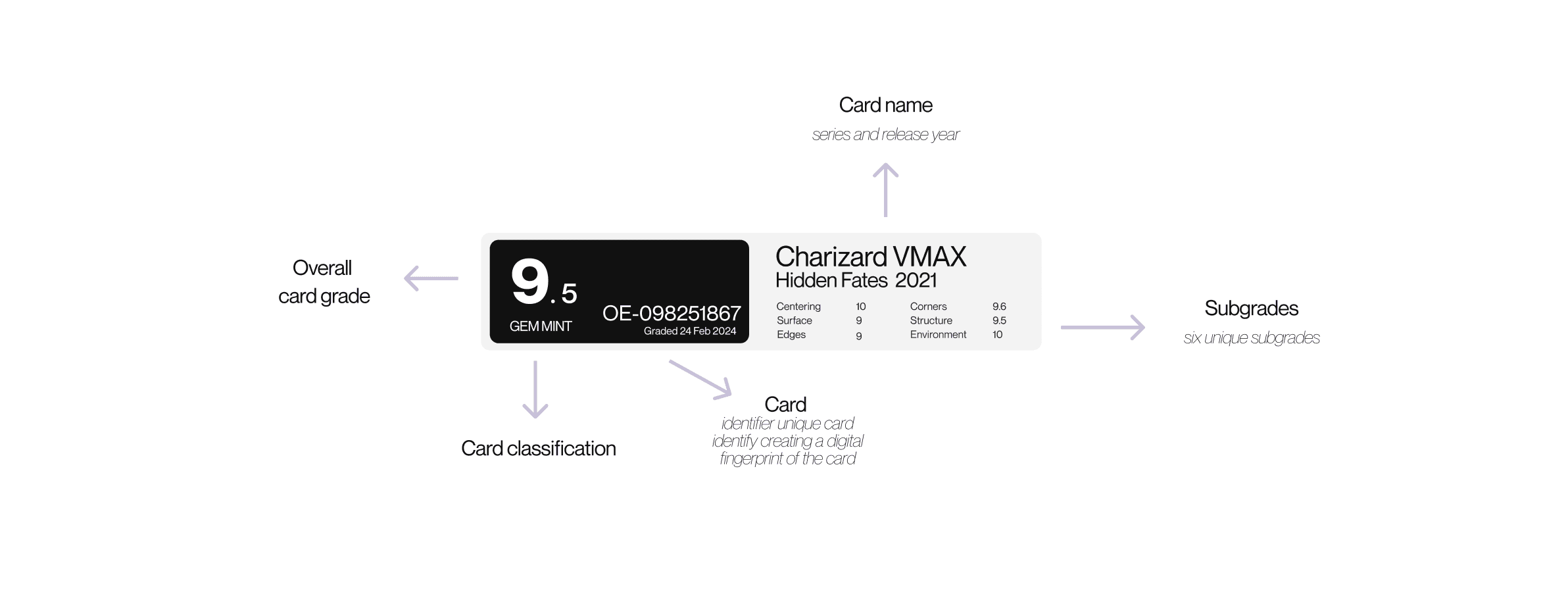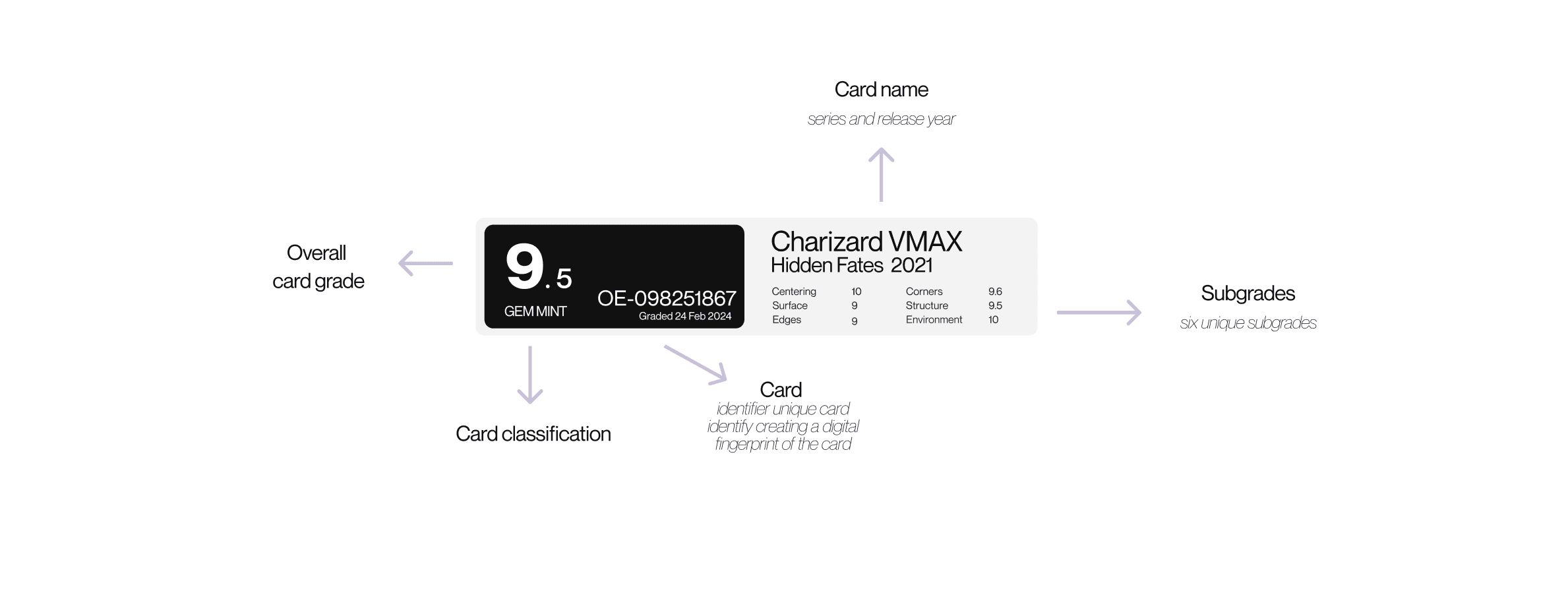New Opticedge Update: Grade & Subgrades
May 3, 2024

We have spent the past six months re building the way we digitally grade cards, you can read about our models here. But lets take a few moments to cover what the out comes are, what they mean to a collector and how you can interpret them.
Our New Grading Scale
Each of our sub-grades and overall grade works on a scale of 1 - 100, this ensures that we can avoid variance in predicted results and as we use multiple data streams we can normalise and clean the data effectively using a novel layer-specific mixed-precision training method. Specifically, we divide all layers of the model into distinct classes, based on their data patterns, and trained each class using precision levels.
We have included an easy to understand RAG (or in our case Green, Blue and Orange) status to understand the range of the grade along with an easy to interpret quality classification as industry standard to help the collector avoid any misinterpretations.

The New Sub-grades
Previously we just returned a grade without any contexts, however we have always calculated addition "grades" and used them in our ensamble network architecture. We have now introduced them and will continue to add more.

What is the Centering Grade
Having a card that is appropriately centered is extremely important for its visual appeal.
Several old sets have gained negative notoriety due to their challenging centering and low-quality control, and new and very recent sets can also have inaccurately cut cards.
What is the Surface Grade
Without a doubt, surface damage is the hardest type of damage to see when a card has been encased.
Surface harm, marks, imperfections and defects during production have a considerable effect on the overall rating.
What is the Edge Grade
Having edges that are tidy and free from considerable damage, such as dents, chips, tears or any sort of destruction, is crucial in obtaining a good grade.
What is the Corners Grade
The corners of a card are extremely important, as a card's overall grade can be greatly affected by the crispness and sharpness of its corners.
What is the Structure Grade
The quality of a card is based on its curvature and stability, with a lower rating given to cards that have become warped, twisted, or have lost their original shape.
What is the Environment Grade
The evaluation of the neighbouring surroundings and illumination is measured by the environmental quality rating. Inadequate assessment of the data quality can result in erroneous analysis, with a score of 0 representing poor quality and 10 indicating the highest A-standard. Adhering to the prescribed guidelines is vital.
What is the Confidence Grade
The most straightforward way to measure prediction success is through the prediction accuracy metric, which is determined by the correspondence in the anticipated grades. The degree of confidence in the prediction ranges from 0, indicating low confidence, to 10, indicative of high confidence.
The new Label
We have now introduced a new label that includes all of the information
